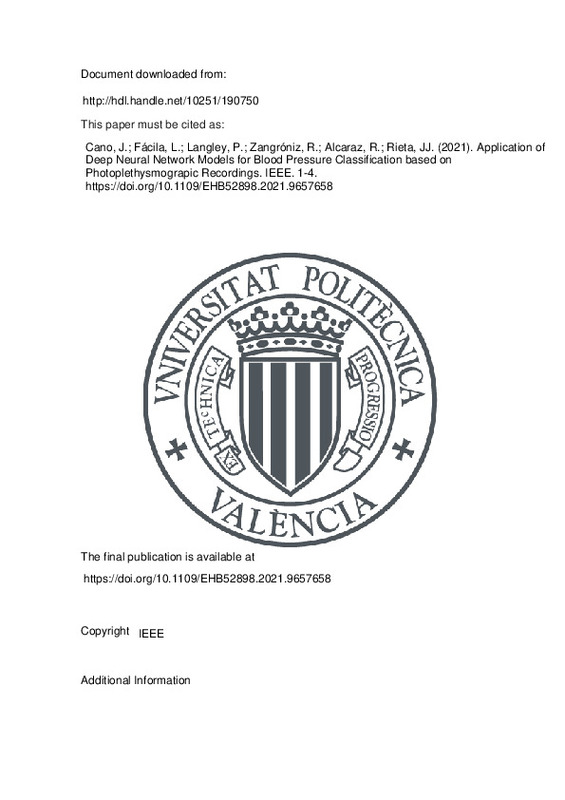JavaScript is disabled for your browser. Some features of this site may not work without it.
Buscar en RiuNet
Listar
Mi cuenta
Estadísticas
Ayuda RiuNet
Admin. UPV
Application of Deep Neural Network Models for Blood Pressure Classification based on Photoplethysmograpic Recordings
Mostrar el registro completo del ítem
Cano, J.; Fácila, L.; Langley, P.; Zangróniz, R.; Alcaraz, R.; Rieta, JJ. (2021). Application of Deep Neural Network Models for Blood Pressure Classification based on Photoplethysmograpic Recordings. IEEE. 1-4. https://doi.org/10.1109/EHB52898.2021.9657658
Por favor, use este identificador para citar o enlazar este ítem: http://hdl.handle.net/10251/190750
Ficheros en el ítem
Metadatos del ítem
| Título: | Application of Deep Neural Network Models for Blood Pressure Classification based on Photoplethysmograpic Recordings | |
| Autor: | Cano, Jesús Fácila, Lorenzo Langley, Philip Zangróniz, Roberto Alcaraz, Raúl | |
| Entidad UPV: |
|
|
| Fecha difusión: |
|
|
| Resumen: |
[EN] The measurement of blood pressure (BP) in an uninterrupted and comfortable way for the subject is essential for early diagnosis and monitoring of cardiovascular diseases (CVD). In fact, hypertension is the main risk ...[+]
|
|
| Palabras clave: |
|
|
| Derechos de uso: | Reserva de todos los derechos | |
| ISBN: |
|
|
| Fuente: |
|
|
| DOI: |
|
|
| Editorial: |
|
|
| Versión del editor: | https://doi.org/10.1109/EHB52898.2021.9657658 | |
| Título del congreso: |
|
|
| Lugar del congreso: |
|
|
| Fecha congreso: |
|
|
| Código del Proyecto: |
|
|
| Agradecimientos: |
|
|
| Tipo: |
|







![[Cerrado]](/themes/UPV/images/candado.png)


